
Rural Internet & 4G LTE Goodness
If you live out in the middle of “nowhere” without high-speed internet then this blog is for you. There are a lot of people that don’t have this problem because most metropolitan areas have some form of high-speed internet. I have been struggling with this since for 6 years when the house we got didn’t have Cable Internet like the seller mentioned and was not in the service area from anyone. How bad is it compared to the normal options like Cable or Fiber that most people have access too? Really bad it can be thousands of times slower than most other options people have.
Examples of Slow DSL – Someone is watching any streaming service but anyone in the house uploads a picture to anything and the internet will come to a crawl for 2-5 minutes for most pictures. These slow systems have the most difficult time uploading anything. You want to upload a 100MB movie it will take around 1-2 hours in most cases. I don’t think there could ever be a Media creator with this type of Internet because you cannot share things with the world because of the time it takes and how all other task will most likely fail with the upload. There are many things I have never been able to share because of the upload toll that must be paid.
My wife is a Disney and Travel blogger at momentmom.com and we are always very limited on what we can share to the world when it comes to pictures along with video. What we have to do in some cases is get our files lined up we want to upload to the blog or share and we have to drive to Dunkin Doughnuts or McDonalds to upload those photos because they have Cable Internet.
Can you imagine limiting what you can share with the world because having to do something like that to upload a picture or video. Working with this type of Internet is difficult to say the least? I have had to limit my blogs and the number of pictures and the quality of pictures because of this. I have dreams of sharing so many things, but with this internet it is not possible. I uploaded one 1.5GB video file and it took over 30 hours to complete, I had to start the upload the when it was bed time and it took that whole next day and some extra before the internet connection is back to normal.
If you’re in the Rural Internet category you normally have 3 options.
- DSL
- Speeds – 1-35Mbps
- Costs – Usually around 30-60 dollars a month depending on the plan.
- Notes – Depending on how far away you are from you nearest junction, the number of pairs you have, and the condition of the cables will determine your actual speed. Rain can slow it down based on the condition of the wire. This is pretty much a monopoly from AT&T because they have the most partnerships with the power companies and telecom service was required to run with power around the 1950s.
- My Experience – I just get usually 120-240Kbps Up and maybe 1-3Mbps down on a good day and with it raining it can drop in half, there have been multiple repairs and promises that it will be better, and it should be this fast, but it never is. I live about 2 miles from the junction box and around 100+ homes on it. Out here we have no other option and most people have a phone line in use.
- Speed\Feed – Latency to 4.2.2.2 30-50ms, Packet Loss less than 1%, Rainy Packet Loss 3-5%
- Connection Stats– Mileage will vary but interesting to see its upload and download speed versus what I see from uploading photos to anything or downloading updates from anything. Lower Latency compared to Satellite and LTE but lower throughput. This means it would be better for gaming and ok for streaming versus the opposite for satellite.
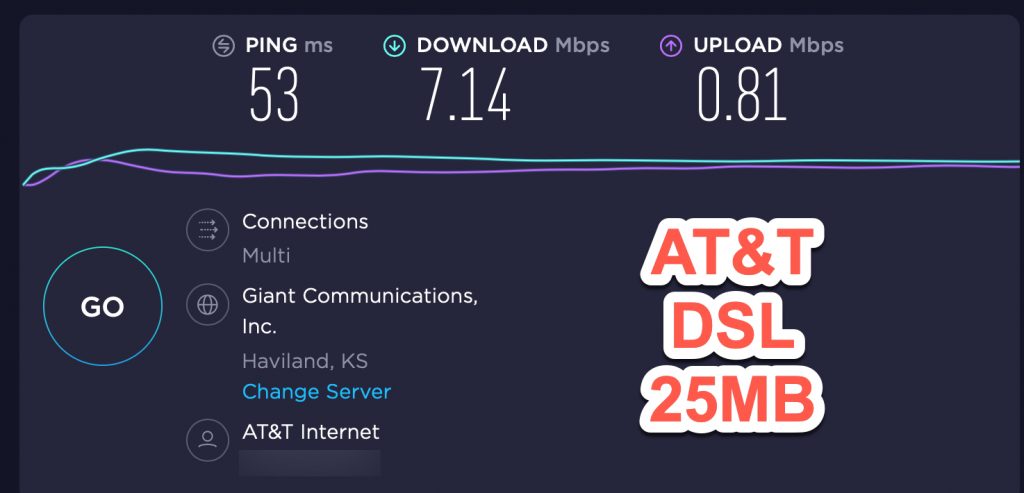

- Satellite
- Speeds – 3-60Mbps
- Costs – Usually around 60-120 dollars a month depending on the plan.
- Notes – Depending on where you are and where the dish can go will determine the quality of service and also if you can even get service because they have limits per node. Hughes, Expede and Viasat and some are hopeful of some low orbit solutions from Elon Musk Starlink could be good, but time will tell.
- The Experience – This system fluctuates the most with the weather because of it needing as clear of line of site as possible to work properly. Depending on how obstructed/wooded your dishes view is will also greatly affect the speed. When it is just cloudy it can affect the speed/latency and then if those clouds are waterlogged or raining the speed can drop by over 50% and the latency can double or triple. A special thanks to my slow internet brother that helped me run tests on his rig a couple miles away, because we would be using the same satellite if I used it.
- Speed\Feed – Latency to 4.2.2.2 6-1000ms, Packet Loss less than 3%, Rainy Packet Loss 5-15%.
- Connection Stats – Mileage will vary but interesting. This was on a clear day which is a very optimal condition. Latency is the enemy of this solution just by pure the pure distance it must travel there and back. It makes it up in throughput when it works, and the packet loss isn’t to high too.
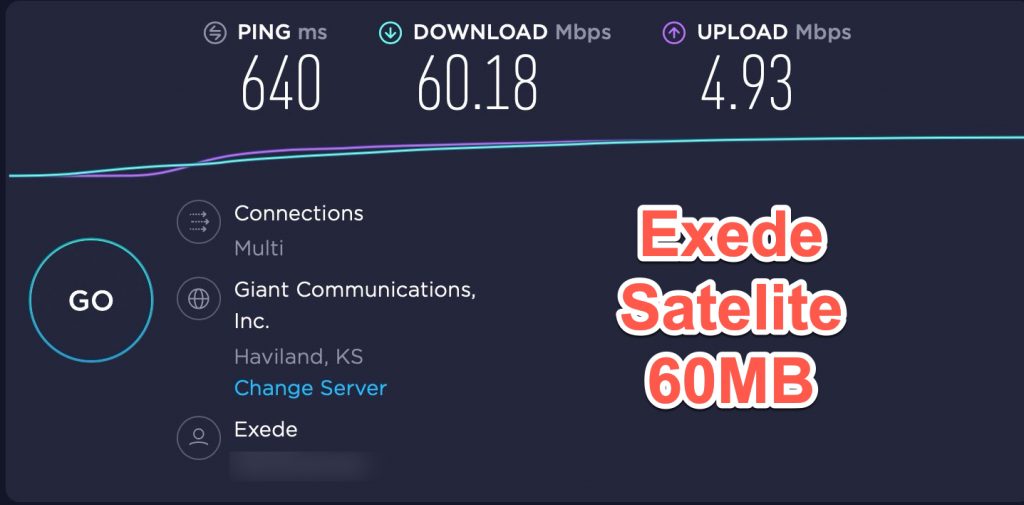
| Round Trip Min | Round Trip AVG | Round Trip Max | Standard Deviation |
| 608ms | 947ms | 1914ms | 433ms |
- 4G LTE
- Speeds – 1-35Mbps
- Costs – Will vary a lot depending on which provider and what plan but around 30-100 dollars can be expected depending on the plan. I think I have got very lucky with my selection because it is a “deal” and I’m not sure how long it will last, but I will use it as much as possible. You need to know that Data Caps and limits and throttling can change things.
- Notes – Depending on the distance from your nearest tower and if you are using an external antenna, which type of antenna and how busy that tower is at those exact moments will determine your speed, latency and packet loss.
- My Experience – I just get usually .8 to 1.5Mbps Up and maybe 2-5Mbps down on a good day and when it rains depending on the cloud coverage it may drop 20-50%. I’m about 7 miles from the tower and my house is near on the higher elevation side so that helps me a bit. One thing is I have not been able to mount the Antenna and Mifi in my attic yet and that is the next step soon and that will change the game.
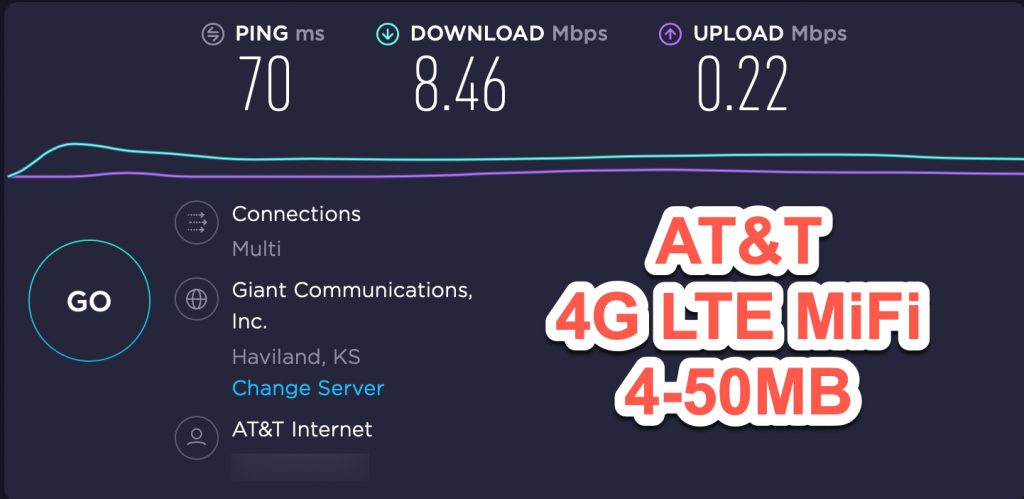
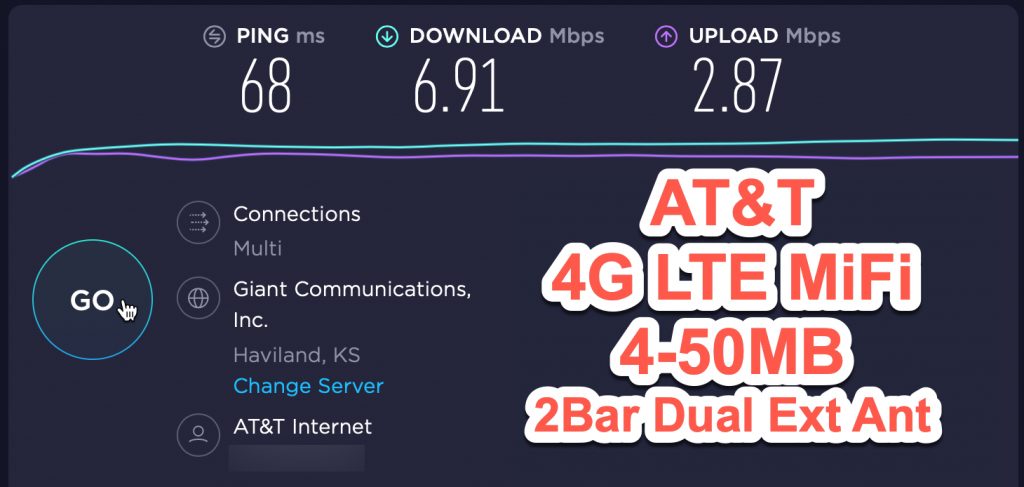
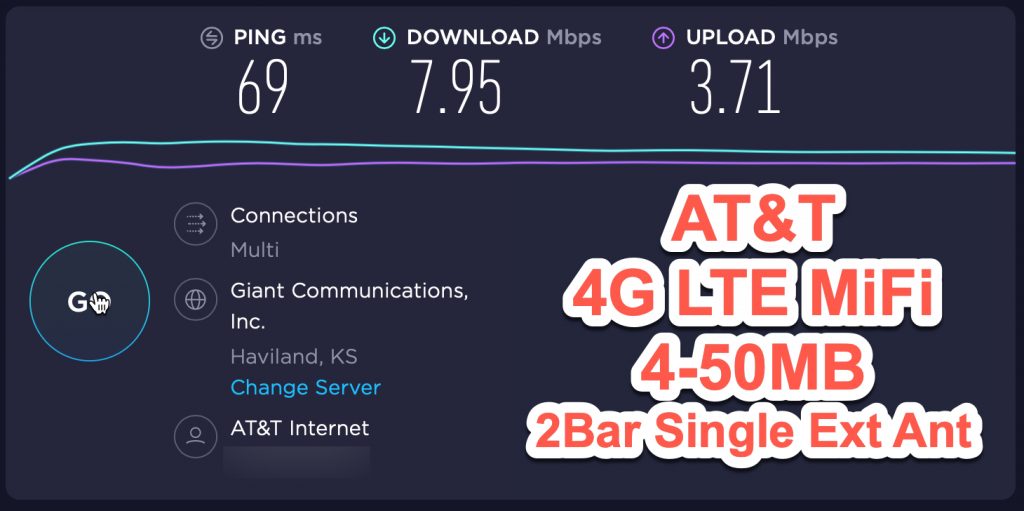
So with these three options which one is the best? Just like with most questions especially IT questions the answer is “It Depends”.
DSL – If you can get it can be pretty stable depending on where you live, and it is the most commonly available. It may offer the lowest latency and possibly the faster more consistent speeds depending on all the factors discussed above. It most likely doesn’t have any data limits, which in our streaming economy is a very big deal. This is basically juiced up dial-up and using those same phone lines so it will have speed limits before Satellite of 4G.
Satellite – With the faster download speeds and its almost limitless coverage area makes it very attractive and possibly the only option for many people based on where you live. It is also the most impacted by weather so depending on where you live that should come into play. It will continually have a higher round trip time just based on how far around the world it has to go with each packet of the data. It has got much more affordable and faster in the many generations of upgrades it has had. It has in most cases the most coverage especially if you are way out.
4G/LTE – This one I think has the biggest hope for many locations because cell phone coverage is so prolific where most people live as it is such a big business. It can be impacted by the weather, but from what I have seen thus far it does a much better job than Satellite coverage. If you can find the right plan and depending on your internet needs it can be about perfect in many situations. You also will have the ability to make it work for you with so many antenna options and mounting options. It also has an upfront cost in most cases and the items are not included in a bundle. If you go on road trips this is a perfect thing to bring along instead of using your cell phones data plan which will have much more limitations along with being able to share it with more devices over Wireless and even Ethernet.
My LTE Formula
- NETGEAR Nighthawk M1 Mobile Hotspot (MR1100
- 2x Types of External Antennas (Still testing which one is the best overall)
- 1x Magical MicroSIM Card from an eBay seller that has lived up to its description thus far.
Shopping List
- NETGEAR Nighthawk M1
- https://www.bestbuy.com/site/at-t-nighthawk-lte-mobile-hotspot- router/6212403.p?skuId=6212403 ($249)
- I went with Best Buy because it was cheaper, and it was in stock and I could pick it up once I had the SIM card.
- Also this will have ethernet so you can use it with your existing Wireless router as the Internet feed for your connection.
- Antennas
- The key with any antenna and Mifi Option is to get it as high as you can along with if there are individual antennas spreading them apart as far as possible too. These are some of the most reviewed ones that are passive. I will test others eventually I’m sure.
- This one was reviewed as being the best for low signal boost.
- This one was reviewed as being the fastest in Metro areas
- SIM Card
- I don’t know how much longer this will last, but it works flawlessly. You just swap the SIM card that will come with your Mifi router with this one and you are off to the races.
- Total – $300-350 you will end up with unlimited bandwidth LTE speed internet connection. If it doesn’t work you should be able to recoup at least 100-200 dollars from selling it all as used or you can also possibly return it depending on where you buy it from.
Setup
- Order the SIM Card First because there are no obligations until you activate your device based on the IMEI of the SIM card.
- Order the Nighthawk M1, if you already have AT&T service and you have 1-2 bars at your house I would recommend an external antenna. If you have more bars then you may not benefit as much or you should get the second one.
- Once you have the SIM card and the Router then just install the SIM card into the router and power it on.
- It will have a default ATT-WIFI SSID you will join and then you will navigate to http://attwifimanager.comand setup a password for the 2.4G and the 5G bands, then you just rejoin that network and you are ready to start testing.
- The SIM card will come with Instructions on how to setup the ATT Wifi account, I made a separate account for this because I wasn’t how sure it would work, so I’m not sure what would happen.
- Once this is done the device should be able to connect to the Internet and you will be set.
- Then from then on you can cancel whenever you want, and it is just $35 dollars a month.
My Bigger Thoughts
I think about the billions of dollars of things we spend our money on in the US and I dream that someone would come around and make the “Big Internet Deal” and help do what was done for phone lines in this country. If there was funding to help motivate the I would guess Electric companies or whoever they want to partner with to get Fiber to every house and down ever road with X number of people on it would be life changing for so many. I think about how people would benefit with content creators able to live anywhere because they can upload to YouTube in minutes instead of days in my case.
This world is connected for better or worse now and having a good connection makes all the difference when it comes to content creation, video editing, gaming, education and so many other areas. I wish the free market would do something, but there is no incentive because of the lower density and the cost of the actual cables, the cost to run them and the cost to maintain them. With only a couple houses on my road Comcast refused to do anything so I have no other options. My electric company is doing this with another company in the next 5 years, but will my road make the cut? Who knows? This lottery of internet connectivity outside of the metro areas is so limiting in so many ways.
If you want your cell phone to be faster this would be the way to make it happen. If the backbone of the phone networks from the major providers had say a 10Gbps or even a 40Gbps connection to a datacenter instead of just a 100-1000Mbps connection imagine how the internet would change. In my eyes we don’t need 5G we need better connections between those towers all over the US and to each house. We don’t need a faster connection between the phone and the tower, we need a faster connection from the towers that are already there to the internet.
This is what the internet should be, distributed with each local house having their own connection to do what it needs to be and then your mobile device to bridge the gaps between the office and home. I so hope this could become a priority in this country and across the world because as much as there is some bad things about the internet I do believe it could make a positive impact. Let me get off my internet connected soap box and get back to “interneting”.
Good Article about having to pay a company to run high-speed internet to a “remote” location that is not in the service group.